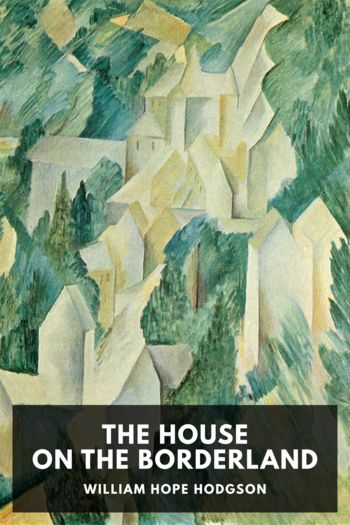Gluck by Diana Souhami (most interesting books to read .TXT) 📗

- Author: Diana Souhami
Book online «Gluck by Diana Souhami (most interesting books to read .TXT) 📗». Author Diana Souhami
As soon as I give this to the postman you can imagine me rushing to the boat – so ‘yo ho ho and a bottle of rum’, Quite crazy you see, as usual. Goodbye darling. Take care of yourself. Forgive all this nautical news – as Nesta said in a lovely spoonerism the other day “The brind and the wheeze” are calling!!
My best love as ever
Always your loving Hig
Gluck moved as far as she could into Nesta’s life. They went to the Plumpton Races at weekends, to the Dog Show at Olympia where Zar was exhibited, to cocktail parties, Glyndebourne, art exhibitions and the first nights of the theatre people whom they knew. At times Gluck noted the precise number of hours and minutes of the week she and Nesta had spent together, with the rueful implication that these might have been more.
For most of 1939 they worked together hectically on a fund-raising project of Nesta’s. This was to raise money for the Heritage Craft School, in Chailey, Sussex. The school, dependent on charitable finance, provided education and hospital care for disabled children. Nesta’s idea was to organize an exhibition of antiques, loaned by Royals and aristocrats, which the public would pay to see. It was a project after the Meteor’s heart. The title, which took up a quarter of the headed paper, read:
EXHIBITION OF ROYAL AND HISTORIC FURNITURE AT 145 PICCADILLY
Graciously loaned by
THEIR MAJESTIES THE KING AND QUEEN AND QUEEN MARY THE DUKE OF CONNAUGHT, K.G., PRINCESS LOUISE, DUCHESS OF ARGYLL PRINCESS ALICE, COUNTESS OF ATHLONE, PRINCESS HELENA VICTORIA AND OTHER MEMBERS OF THE ROYAL FAMILY AND OTHER OWNERS IN AID OF THE HERITAGE CRAFT SCHOOLS, CHAILEY, SUSSEX
Princess Alice was President of the exhibition and Lord Hollenden its Chairman. 145 Piccadilly was the London home of George, Duke of York, until he became King in 1937. Nesta whisked Gluck from palaces to stately homes persuading the rich and regal to lend their chattels. But Gluck had no history of interest in collecting money for charitable ventures, that was her mother’s domain, nor any true zeal for organizing exhibitions other than her own. ‘Life seems to start at 6.30 and go on to midnight these days,’ she wrote to her mother in May 1939. ‘I am never in after 9 in the morning at Bolton House and don’t get back till about 11.30 or 12. What a life! There’s one consolation, it can’t go on for ever but must stop soon –’
And stop it did. The exhibition opened on 28 June 1939. It ran for two months, raised a substantial amount for the Heritage and earned Gluck more Royal notice – from Princess Alice who wrote commending her on her ‘marvellous triumph, ability, untiring energy and self sacrifice for Chailey’. On the 3rd of September Gluck’s laconic diary entry was ‘War declared. N. at BH.’ She spent the next few days returning the Royal furniture, closing the exhibition at 145 Piccadilly, and packing up Bolton House to go down to Sussex. She appeared more concerned at not seeing enough of Nesta, than at the threat of war. ‘Saw N only by own efforts for a few minutes after Wednesday.’ ‘Stay night only by saying too tiring to leave so early for meeting next day’ were her disgruntled diary entries. Gluck’s preoccupations were with Love and Art and her own feelings. Her battles were within and her war was to come a little later.
Within weeks, Bolton House was commandeered by the Auxiliary Fire Service. She handed the whole thing over to her Trustees to sort out, kept the studio as a London pied-á-terre and moved in with Nesta’s mother, Mrs Sawyer, while searching for a house close to Nesta’s to rent. Mrs Gluckstein, mindful of the hints Nesta had dropped of her mother being less than enamoured of Gluck as a house guest, wrote to thank Mrs Sawyer. ‘I do not want thanks when it is a pleasure to me to have Gluck,’ Mrs Sawyer replied.
The upheaval and uncertainty unsettled Gluck and she felt Nesta was not helping all she might. ‘My looks say I am well, my spirit is a mess at the moment and my body and nerves almost at the end of their tether’, she wrote to her mother (24 September 1939). But she soon found a house and because of petrol rationing got herself a bicycle, which she quickly learned to ride. Nesta bought a motorbike, which she rode round the lanes at alarming speed.
‘Millers Mead’, in Plumpton, was about two minutes away from Nesta. It was small, not at all on the scale of Bolton, and a simple outhouse in the garden was to serve as Gluck’s studio. She took it ‘for the duration’ at a rent of £218.8.0d a year and moved in with a married couple, the Fitzgeralds, as her servants. There were numerous letters to mother, appealing for an iron, a bell for summoning the servants, a supply of liquor – six bottles of claret, Chateau Durfort Vivens, 1929, six of hock and a quantity of spirits – cans of salad oil, a bedside table and a lawn mower. She got hens and hives of bees and prepared herself for the privations of wartime.
And she began working again. A commission came from the Bougheys, cousins of the Giffards. They lived in Mailing, a big early-eighteenth-century house on the Sussex Downs, near Lewes. Their twenty-year-old son, John, had been





Comments (0)